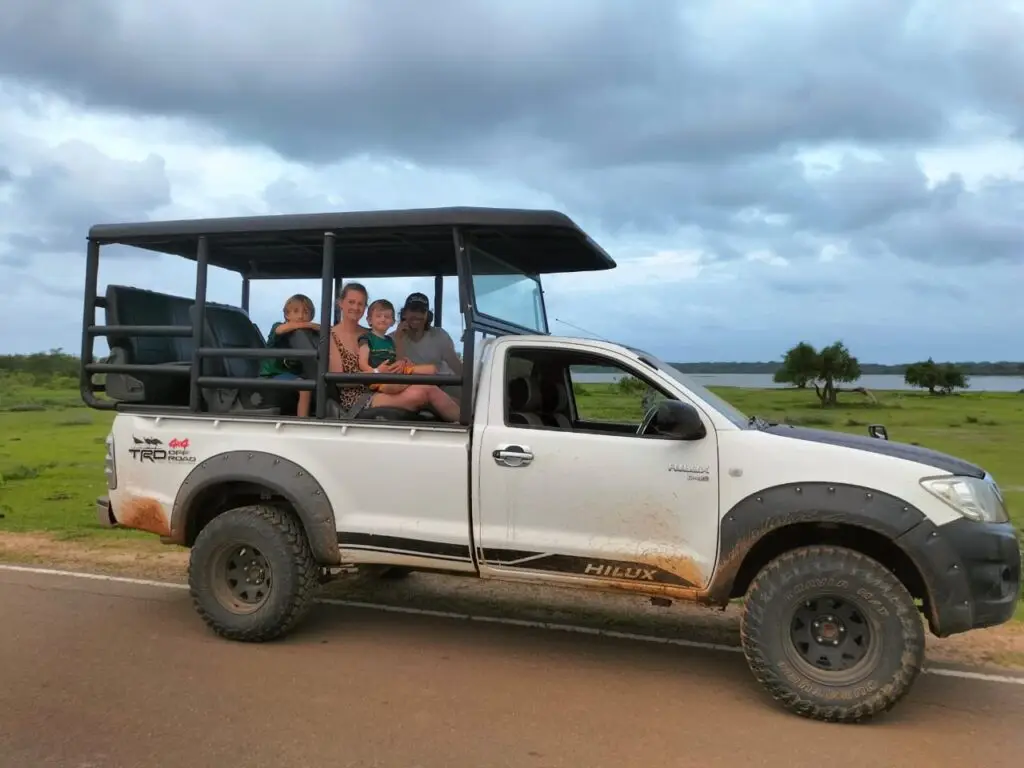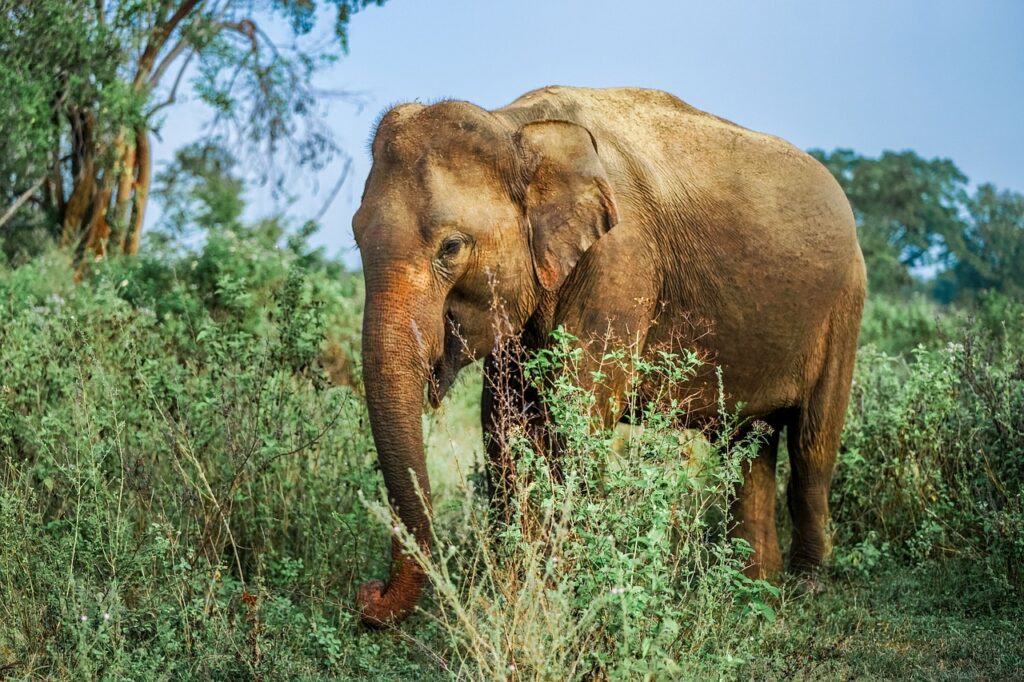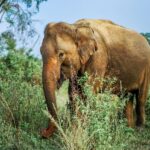Introduction to Sri Lanka’s Wildlife (Best time for safari in Sri Lanka)
Sri Lanka, often referred to as the “Emerald Isle,” is renowned for its exceptional biodiversity and unique ecosystems. This island nation hosts an impressive range of wildlife, from majestic elephants to elusive leopards, making it one of the best destinations globally for wildlife enthusiasts. The combination of lush forests, grasslands, wetlands, and coastal areas supports a variety of habitats that are home to numerous animal species, many of which are endemic to the island.
The national parks in Sri Lanka, such as Yala, Udawalawe, and Wilpattu, provide sanctuary to a rich tapestry of flora and fauna. Yala National Park, for instance, is famous for its high density of leopards, while Udawalawe is renowned for its elephant populations. Birdwatchers, too, find solace here, as the island boasts more than 400 bird species, including both resident and migratory birds. The diverse wildlife and ecosystems of Sri Lanka make it a haven for those seeking to experience nature’s wonders in their rawest forms.
Visiting Sri Lanka offers an opportunity to witness these extraordinary creatures in their natural habitats, fostering a connection with wildlife that is both thrilling and educational. Encountering elephants as they roam freely through the jungles or witnessing the stealth of leopards as they navigate their territories allows visitors to appreciate the intricate dynamics of wildlife ecosystems. The best time for safari in Sri Lanka varies depending on the specific park, but regardless of the season, the allure of Sri Lanka’s wildlife remains strong. Exploring these habitats not only enhances the travel experience but also underscores the importance of wildlife conservation and protecting these pristine environments.
Overview of Sri Lanka’s National Parks (best time for safari in Sri Lanka)
Sri Lanka is renowned for its diverse wildlife and stunning landscapes, enriched by a network of national parks that offer unique safari experiences. Among the most notable parks is Yala National Park, which covers an area of approximately 979 square kilometers. It is famed for its high density of leopards, making it one of the best places for wildlife enthusiasts looking to spot this elusive big cat. Yala’s mixed habitats, including dry shrub forests, wetlands, and coastal lagoons, contribute to an impressive array of flora and fauna. In addition to leopards, visitors may encounter elephants, crocodiles, and a diversity of bird species, enhancing its allure.
Another significant national park is Udawalawe National Park, established primarily for the protection of elephants. Spanning around 308 square kilometers, it is renowned for its expansive grasslands and open terrain, which allows for excellent wildlife viewing opportunities. This park serves as a sanctuary for over 500 elephants, offering a chance to observe them in their natural habitat. Additionally, Udawalawe is home to various other wildlife, including water buffalos, jackals, and numerous bird species, making it a suitable option for those interested in both mammals and avifauna.
Furthermore, Bundala National Park, designated as a UNESCO Biosphere Reserve, is a prime destination for bird watchers. Covering an area of 6,216 hectares, Bundala features a mix of lagoons, wetlands, and sandy beaches, housing thousands of migratory birds. The park is particularly famous for its flock of flamingos, which create a spectacular display during the migratory season. Each of these parks offers distinct experiences and showcases the rich biodiversity that Sri Lanka is known for. By understanding the characteristics of these national parks, visitors can determine the best time for safari in Sri Lanka, based on their specific interests and desired wildlife encounters.
Seasonal Weather Patterns in Sri Lanka (best time for safari in Sri Lanka)
Sri Lanka, with its diverse ecosystems and rich wildlife, experiences distinct seasonal weather patterns that significantly impact the best time for safari in Sri Lanka. The country primarily enjoys two monsoon seasons: the Southwest Monsoon (May to September) and the Northeast Monsoon (December to February). These monsoons bring varying rainfall to different regions, influencing wildlife activity and visibility for safari enthusiasts.
The Southwest Monsoon typically affects the western and southern parts of the island. During this time, rain can be heavy, particularly in regions like Yala and Udawalawe National Parks. While the rainfall may deter some visitors, many animals are still active and can be spotted easily as they gather around diminishing water sources. Hence, for those seeking a unique wildlife experience, the months following this monsoon, especially from October to November, are also considered one of the best times for safari in Sri Lanka.
Conversely, the Northeast Monsoon brings rain to the eastern regions, impacting parks such as Minneriya and Kaudulla. The dry season that follows, which lasts from March to early May, creates optimal conditions for wildlife viewing, as animals congregate around the few remaining waterholes. This period is characterized by increased animal activity, making it an ideal time for visitors aiming to observe elephants and various bird species. The clear skies during the dry season also enhance visibility, allowing for excellent photographic opportunities.
Understanding these seasonal weather patterns is essential for planning a successful safari trip. Each national park offers different wildlife experiences depending on the time of year, underscoring the necessity of selecting the right season to maximize safari adventures in Sri Lanka.
Best Time to Visit for Wildlife Sightings (best time for safari in Sri Lanka)
Determining the best time for safari in Sri Lanka largely depends on the specific national parks and the wildlife one aims to observe. Sri Lanka’s diverse climate ensures that different parks offer unique opportunities for wildlife sightings throughout the year.
Yala National Park is particularly renowned for its leopard population. The best time for safari in Sri Lanka to visit for leopard sightings is during the dry season, from February to June, when animals congregate around dwindling water sources, increasing visibility. During these months, the chances of spotting a leopard are notably higher due to reduced foliage and animal activity patterns that bring them to the forefront.
On the other hand, Uda Walawe National Park is famous for its large elephant herds. The best time for safari in this park is generally during the dry months of June to September. These months provide optimal visibility as elephants tend to gather near waterholes to quench their thirst, making them easier to spot. Additionally, morning and late afternoon drives during this period can yield rewarding experiences for animal enthusiasts.
Wilpattu National Park, with its diverse habitats, is another excellent option for wildlife sightings, particularly for sloth bears and leopards. The ideal times to visit are generally during the dry season from March to October. It is most effective to plan visits early in the morning or late in the afternoon, as this aligns with the animals’ natural behaviors.
Consequently, while planning a best time for safari in Sri Lanka, it is crucial to consider the specific wildlife one hopes to observe and tailor the visit accordingly to ensure memorable encounters in the breathtaking backdrops of these national parks.
Morning vs. Evening Safaris: Timing Considerations (best time for safari in Sri Lanka)
When planning a safari in Sri Lanka, understanding the best time for safari experiences is crucial in maximizing wildlife sightings. Two primary periods for game drives are the early morning and the late afternoon or evening. Best time for safari in Sri Lanka Each time offers distinct advantages related to animal behavior, environmental conditions, and the overall safari experience.
Morning safaris typically commence at dawn when temperatures are cooler and the atmosphere is calm. This period is particularly advantageous for wildlife viewing, as many animals are most active during the cooler hours. For example, predatory animals, such as leopards and tigers, are often on the hunt at this time, making it an excellent opportunity for spotting these elusive creatures. Additionally, many herbivores, including deer and elephants, are seen grazing before the heat of the day takes hold. The early hours provide easier visibility and a greater likelihood of encountering a diverse range of species before the sun’s intensity increases.
Evening safaris, on the other hand, offer a different yet equally rewarding experience. As temperatures begin to cool again, animals become more active, often emerging from their resting spots. Notably, many species are more social in the evening, leading to captivating observation opportunities. The golden hour of sunset can enhance photographic experiences, Best time for safari in Sri Lanka showcasing wildlife against a dramatic sky. However, it is essential to be aware that light conditions may affect sighting capabilities as dusk sets in. Choosing to embark on an evening safari can often lead to witnessing remarkable behaviors, such as lions returning to their pride or elephants congregating at watering holes.
Ultimately, whether one chooses a morning or evening best time for safari in Sri Lanka, both periods have distinctive benefits. By considering the behavior patterns of wildlife and the unique characteristics of each time, visitors can significantly enhance their safari experience, increasing the likelihood of unforgettable wildlife encounters.
Understanding Wildlife Behavior and Migration Patterns (best time for safari in Sri Lanka)
To truly experience the best time for safari in Sri Lanka, it is essential to understand the behavior and migration patterns of the country’s diverse wildlife. best time for safari in Sri Lanka is home to a plethora of species, including elephants, leopards, and various bird species. These animals exhibit specific patterns influenced by seasonal changes, the availability of water, and food sources. Understanding these factors can significantly enhance wildlife viewing opportunities in the national parks.
One of the most prominent animals in best time for safari in Sri Lanka is the Asian elephant. During the dry season, particularly from April to September, elephants often congregate around water sources. Parks such as Minneriya and Kaudulla witness a phenomenon known as ‘the gathering,’ where hundreds of elephants gather near dwindling waterholes. This season is, thus, deemed one of the best times for safari in Sri Lanka, as the likelihood of spotting elephants is exceptionally high.
Leopards, another key species, are more elusive but can also be observed if one considers their nocturnal behavior. These big cats are known to establish territories dependent on the availability of prey. During the rainy season, from October to January, certain areas in Yala National Park see a surge in their population as they hunt for food, making it an excellent time for leopard sightings.
Birdwatchers will find that migratory birds visit the country during certain times of the year. From November to April, a wide variety of migratory birds can be spotted, enriching the biodiversity and providing stunning observations. Furthermore, understanding the seasonal dynamics of flora—such as flowering and fruiting—will also play a crucial role in where wildlife congregates.
In conclusion, to optimize wildlife experiences, visitors should plan safaris around the expected animal behavior and migration patterns determined by seasonal changes. Recognizing these patterns ensures that travelers can maximize their opportunities to observe the unique wildlife of Sri Lanka in its natural habitat.
Tips for Planning Your Safari: What to Bring and Expect (best time for safari in Sri Lanka)
Embarking on a best time for safari in Sri Lanka can be one of the most exhilarating experiences, especially if one is well-prepared. To ensure that your adventure is both enjoyable and successful, there are several items and expectations to consider. First and foremost, selecting appropriate clothing is crucial. Lightweight, breathable fabrics in neutral colors help you blend into the natural surroundings and keep you comfortable in varied weather conditions. Long-sleeved shirts and trousers are highly recommended, as they protect against sunburn and insect bites.
Photography enthusiasts should bring a good quality camera, along with extra batteries and memory cards, to capture the stunning wildlife. A zoom lens is particularly useful for photographing animals from a safe distance. Additionally, binoculars can enhance your wildlife viewing experience, allowing you to spot majestic creatures in the distance.
In terms of supplies, carrying a small backpack with essentials such as water, snacks, sunscreen, a hat, and a first-aid kit is vital. Staying hydrated is key, especially during warmer months when temperatures can soar. Proper sun protection is also essential, as you may spend several hours under the sun while on safari.
When it comes to expectations, understanding the types of vehicles used for safaris is important. Most national parks in best time for safari in Sri Lanka offer open-top jeeps that provide an unobstructed view, allowing for an immersive wildlife experience. It may also be beneficial to join guided tours, as local guides possess valuable knowledge about the animals and their habitats, enriching your understanding of the ecosystem. Prior to embarking on your journey, familiarize yourself with safety precautions, including maintaining a safe distance from wildlife, to ensure that you enjoy the best time for safari in Sri Lanka while prioritizing your safety.
Cultural Significance of Safaris in Sri Lanka (best time for safari in Sri Lanka)
The cultural significance of wildlife safaris in Sri Lanka extends beyond merely observing animals in their natural habitat; it encompasses the intricate relationship between local communities, conservation efforts, and tourism. In Sri Lanka, the best time for safari in Sri Lanka aligns not only with favorable weather conditions but also with the opportunity for cultural engagement and awareness of local ecosystems.
Local communities view their wildlife heritage as a critical aspect of their identity, while wildlife safaris offer a platform for cultural exchange between tourists and residents. This interaction cultivates a deeper understanding of the intricate balance between human activities and wildlife preservation. Such encounters challenge the misconception that wildlife conservation is solely the domain of environmentalists; rather, it highlights the integral role that local populations play in safeguarding their natural resources.
Moreover, responsible tourism is crucial for ensuring that wildlife safaris contribute positively to the local economy. When visitors engage in safari experiences, they not only support local businesses but also fund initiatives aimed at habitat conservation and wildlife protection. This economic incentive encourages communities to protect their natural surroundings rather than exploit them for short-term gains. The best time for safari in Sri Lanka thus becomes synonymous with educating tourists about sustainability practices and their impacts, ultimately promoting wildlife conservation.
As Sri Lanka continues to develop its safari tourism, striking a balance between preserving cultural values and environmental integrity becomes essential. By prioritizing responsible tourism, both locals and visitors can forge a meaningful relationship with Sri Lanka’s wildlife, ensuring that future generations can appreciate the diverse ecosystems and rich cultural heritage that the nation has to offer.
Conclusion: Your Wildlife Adventure Awaits (best time for safari in Sri Lanka)
Embarking on a best time for safari in Sri Lanka is an extraordinary experience that promises to unveil the island’s breathtaking biodiversity. With its varied landscapes and a multitude of endemic species, best time for safari in Sri Lanka stands out as a premier destination for wildlife enthusiasts. As highlighted throughout this guide, understanding the best time for safari in Sri Lanka plays a crucial role in maximizing your wildlife encounter. Optimal months not only influence animal sightings but also enhance the overall adventure.
From the dry savannah of Yala National Park where leopards reign, to the lush terrains of Udawalawe National Park featuring elephants in their natural habitat, each national park offers unique opportunities for exploration. The distinct weather patterns of these regions dictate the ideal time to visit, ensuring you can witness animals at their most active. Hence, planning your safari based upon these insights is essential for crafting an unforgettable experience.
Moreover, considering the seasonal migration patterns and the diverse ecosystems that Sri Lanka boasts, you can tailor your journey to align with your wildlife interests. Whether you seek excitement amid the rush of a herd of deer or the peaceful observation of bird species in early dawn, your adventure can be optimized to align with nature’s rhythms. This meticulous planning is paramount in experiencing the authentic essence of Sri Lanka’s wildlife best time for safari in Sri Lanka.
In essence, where and when you decide to embark on your wildlife adventure can profoundly impact the memories you create. With a proper understanding of the best time for safari in Sri Lanka and the unique attributes of its national parks, you are well-equipped to plan a journey that will leave you enriched and inspired by one of Earth’s most remarkable natural habitats. Embrace the thrill of exploration, and embark on a safari that awaits you in this stunning corner of the world.





















